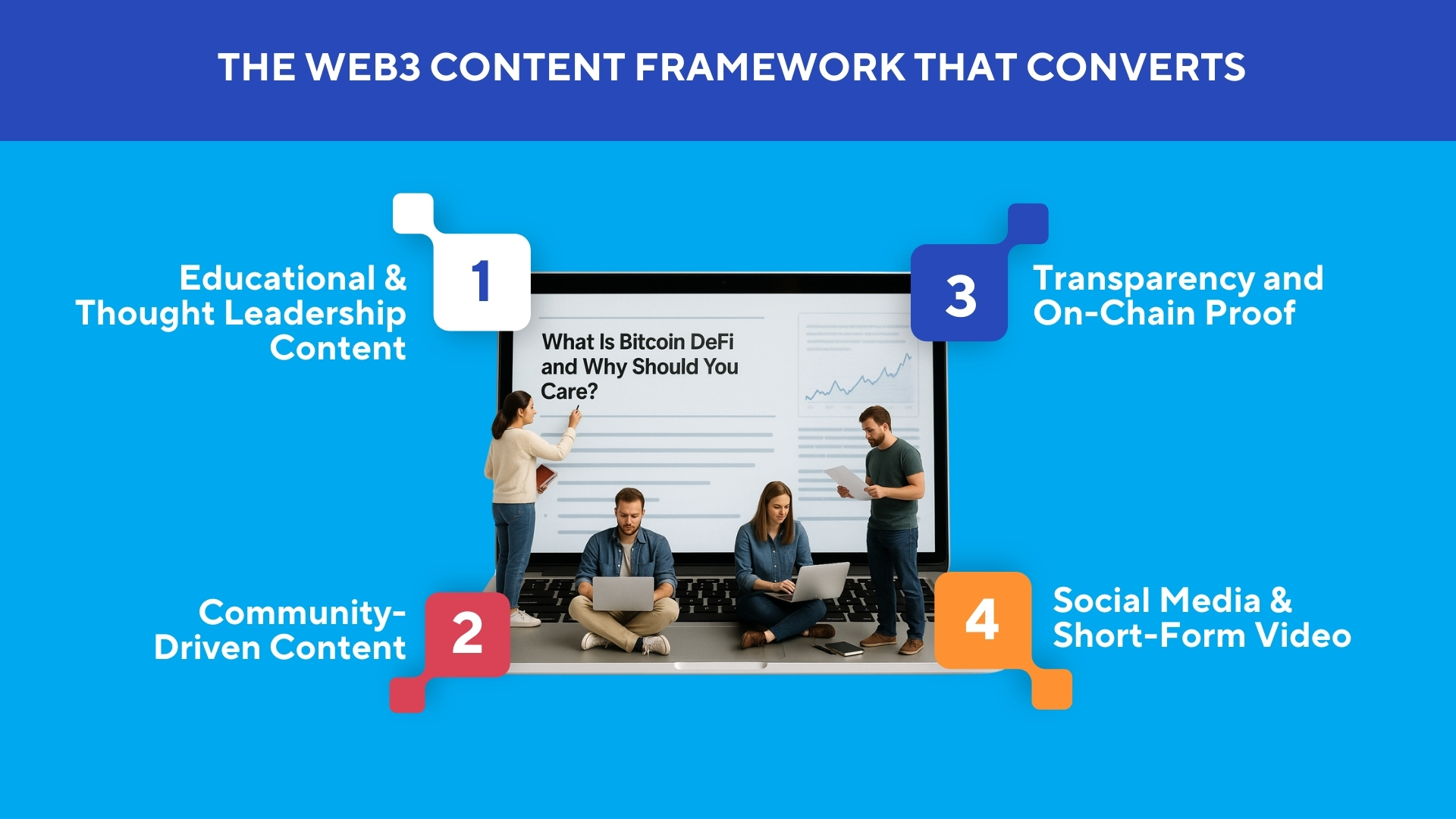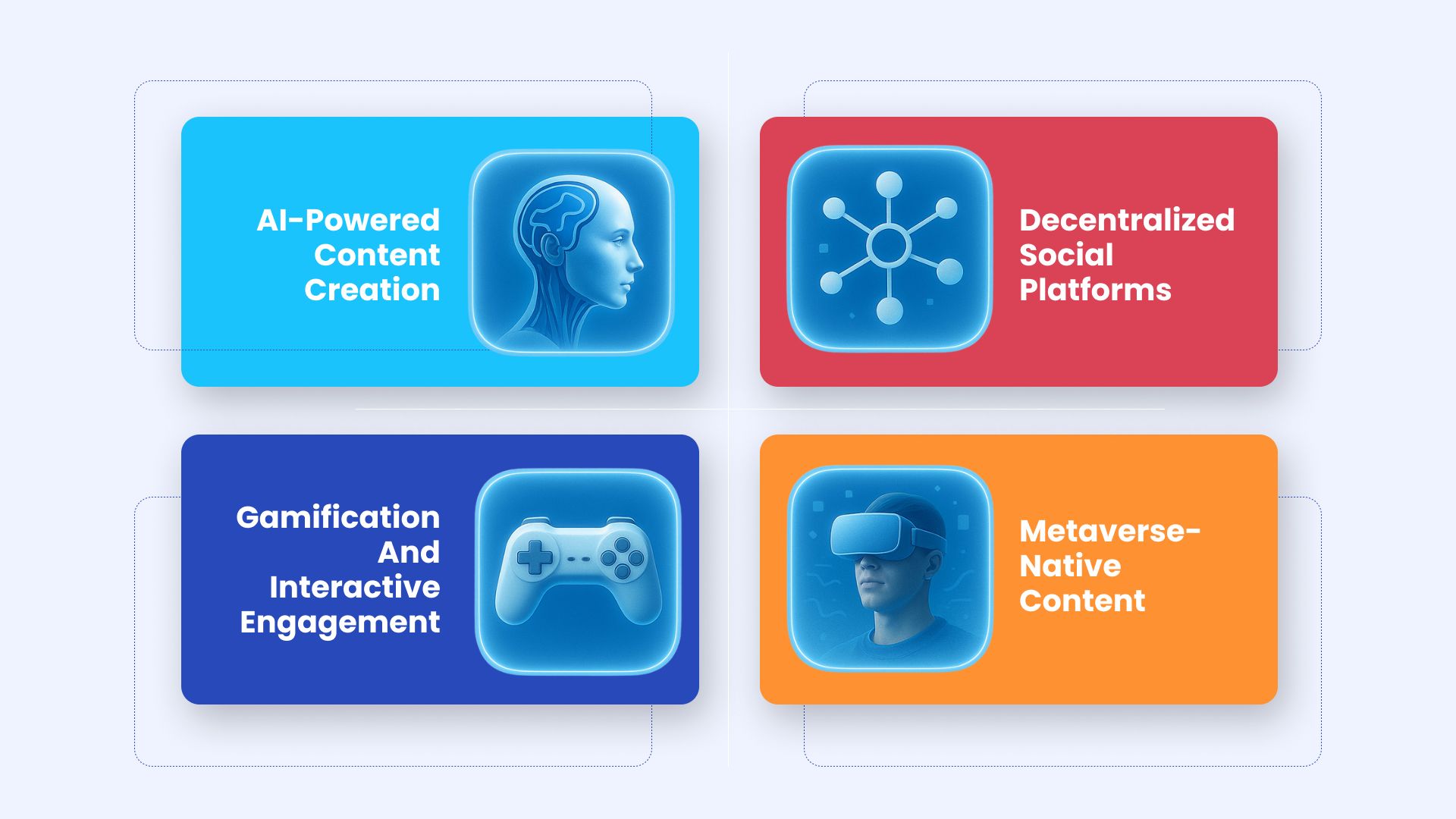Web3 is a different beast when it comes to content marketing.
Unlike Web2, where paid ads, influencer sponsorships, and aggressive email funnels dominate, Web3 users demand transparency, community involvement, and content that actually provides value.
Traditional marketing tactics don’t just often fail—they can actively alienate Web3 users.
So, how do you create Web3 content that doesn’t just generate noise but actually gets you users? In this guide, we break down the Web3 content strategies that work—and the mistakes that will kill your growth.
Web3 Users Aren’t Web2 Users—Why That Matters
Most Web2 growth tactics don’t work in Web3. Here’s why:
- Web3 audiences are skeptical; they’ve seen too many rug pulls, vaporware projects, and overpromised tokenomics that led to financial losses. The collapse of Terra/Luna, the FTX scandal, and countless DeFi exploits have made users more cautious than ever before.
- They value decentralization and transparency, meaning projects must build trust before expecting conversions. The Web3 mantra is “Don’t trust, verify.” This means blockchain-based proof, open development, and clear tokenomics are vital.
- Community engagement is crucial. Web3 projects thrive when users feel like they’re part of something bigger. Unlike Web2, where companies control their audience, Web3 fosters a participatory culture, where users actively contribute to governance, development, and even marketing.
A survey by Messari found that 72% of Web3 users rely on community recommendations rather than traditional ads when deciding whether to adopt a new project. This shift demands a new approach to content marketing—one that emphasizes authenticity, education, and transparency over flashy ads.
The Web3 Content Framework That Converts

Educational & Thought Leadership Content
Users aren’t going to throw money at a project they don’t understand. That’s why educational content is king in Web3.
The best-performing projects invest heavily in:
- Beginner-friendly guides (e.g., “What Is Bitcoin DeFi and Why Should You Care?”) that break down complex topics for new users.
- Deep-dive explainers that dissect tokenomics, governance models, and consensus mechanisms. A great example is Ethereum’s Ultrasound Money thesis, which helped clarify ETH’s deflationary mechanism.
- SEO-optimized blog content that captures users searching for relevant information. According to HubSpot, organic search drives 53% of all website traffic, making SEO a vital long-term strategy.
Example: Bankless has built a massive audience by producing high-quality educational content about DeFi, Ethereum, and crypto culture. Their long-form newsletters, podcasts, and explainers serve as a blueprint for Web3 brands looking to build credibility.
Transparency & On-Chain Proof
Web3 users expect open and verifiable communication. That means publishing regular project updates and development roadmaps. It’s also advisable to share smart contract audits and security reports.
Using blog posts, Twitter threads, and Discord announcements helps to keep the community informed and build your project’s credibility.
Case Study: Ethereum Name Service (ENS) thrives on transparency. They publish DAO governance updates, financial reports, and protocol changes, ensuring their users feel involved in the project’s future. This approach has helped ENS retain a strong and engaged community.
Community-Driven Content
Web3 is built on communities. The best projects leverage user-generated content and direct engagement through various interactive forms of content.
The memecoin economy, for instance, thrives on this. Memes like Dogecoin and PEPE prove that community engagement can drive massive adoption. You could also leverage Twitter Spaces and AMAs to discuss updates and answer questions from interested users.
User-created educational content that breaks down complex ideas is another excellent option. Many projects run bounty programs for content creators who produce tutorials and guides.
“Web3 audiences are fluent in bullshit. If your content isn’t transparent, informed, and community-aware, it won’t land. Simple as that,” says Alex Lielacher, founder and CEO of Rise Up Media.
Social Media & Short-Form Video
Crypto Twitter, TikTok, and YouTube Shorts are goldmines for Web3 content. Here’s what works:
- Short, snappy videos explaining Web3 concepts in 30 seconds or less. Examples: “How to Use a Hardware Wallet” or “What Is a Liquidity Pool?”
- Live streams and interactive Q&A sessions to engage audiences in real time. Platforms like Bankless and The Defiant thrive on this strategy.
- Edutainment-style content (education + entertainment) to keep users hooked. Accounts like Bored Elon Musk and NFT influencers like Loopify combine humor with value-driven insights.
The Future of Web3 Content: AI, Interactive Media & New Trends

The Web3 content landscape is changing fast, and the next few years will bring new technologies and distribution models that reshape how brands engage users.
Here’s what to watch:
AI-powered content creation
AI is increasingly being used to generate blog content, automate social media posts, and even personalize user experiences. However, while AI can enhance efficiency, authenticity remains a key differentiator. Projects that balance AI efficiency with human storytelling will stand out.
Gamification and interactive engagement
The early success of Play-to-Earn (P2E) games and interactive token drops shows that users crave engaging experiences rather than passive content consumption. Expect more brands to use quizzes, reward-based learning, and token incentives to drive engagement.
Decentralized social platforms
Platforms like Lens Protocol and Farcaster are changing how Web3 content is shared and monetized, offering censorship-resistant publishing and user ownership over data. As these platforms grow, they could become major hubs for Web3 content distribution.
Metaverse-native content
As virtual worlds evolve, expect content strategies to integrate virtual reality (VR) and augmented reality (AR), allowing users to experience educational content in immersive environments.
Brands that adapt to these trends early will gain a competitive advantage, leveraging technology to create deeper engagement with their audience.
Ready to Level Up Your Web3 Content Strategy?
Web3 content creation is about more than just publishing blog posts and posting on social media—it’s about building a brand that Web3 users trust and want to engage with.
The Web3 space moves fast, and the brands that invest in content that builds long-term trust and engagement will be the ones that thrive.
Rise Up Media can create high-impact content for you that actually gets users. Let’s talk!




